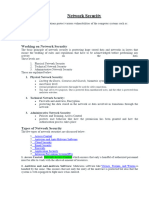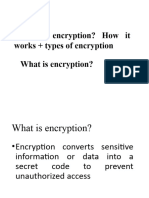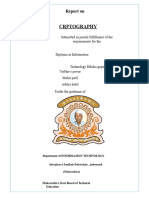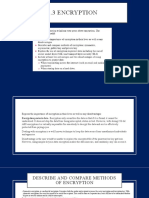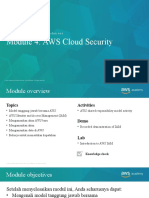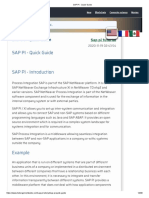0% found this document useful (0 votes)
4 views20 pagesEncryption and Decryption
This document explores the fundamentals of encryption and decryption, highlighting their definitions, methods, applications, and challenges in data security. It discusses symmetric, asymmetric, and hybrid encryption methods, along with their roles in secure communication, data protection, and e-commerce transactions. The document also addresses key management, performance issues, and regulatory compliance as critical challenges in implementing effective encryption solutions.
Uploaded by
borahmaina2003Copyright
© © All Rights Reserved
We take content rights seriously. If you suspect this is your content, claim it here.
Available Formats
Download as PPTX, PDF, TXT or read online on Scribd
0% found this document useful (0 votes)
4 views20 pagesEncryption and Decryption
This document explores the fundamentals of encryption and decryption, highlighting their definitions, methods, applications, and challenges in data security. It discusses symmetric, asymmetric, and hybrid encryption methods, along with their roles in secure communication, data protection, and e-commerce transactions. The document also addresses key management, performance issues, and regulatory compliance as critical challenges in implementing effective encryption solutions.
Uploaded by
borahmaina2003Copyright
© © All Rights Reserved
We take content rights seriously. If you suspect this is your content, claim it here.
Available Formats
Download as PPTX, PDF, TXT or read online on Scribd
/ 20



























